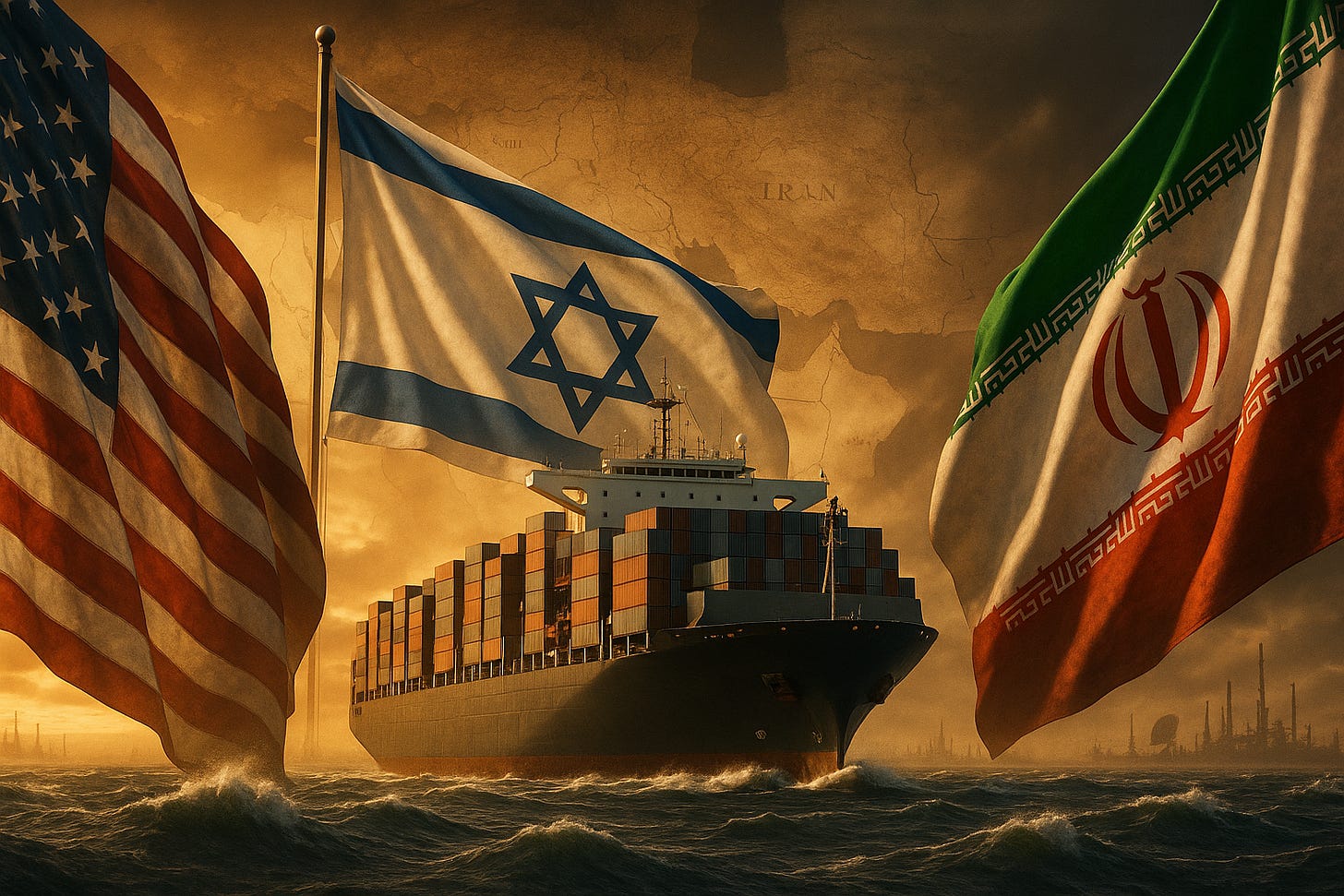🚨Is Global Shipping Nearing Its Most Dangerous Crossroads in Decades?
🔥Strikes, chokepoints, and high rates—how the Hormuz flashpoint is reshaping the future of maritime trade. Here’s what it means for you.
🎖️Subscribe /✨Sponsorship /📊Exclusive Report /🙏Rate us /🎁Send Gift
🔥Greetings, Maritime Mavericks!
In recent days, a significant escalation in Middle East tensions has drawn attention to the Strait of Hormuz—through which nearly 1 in every 5 barrels of global oil travels. Airstrikes on Iranian nuclear-linked facilities and increased regional activity have introduced new operational risks for global shipping stakeholders.
With drone activity, navigation interference, and shifting fleet behaviors across tanker and container sectors, shipping firms are reassessing exposure, contracts, and contingency plans.
Let’s break down 10 critical developments impacting global shipping, containerships, tankers, trade routes, and global cargo flows:
Strait of Hormuz: One Chokepoint, 20% of Oil
Tanker Market Disruption: VLCC Spot Rates Surge
Insurance Volatility: War Risk Premiums Increase
Navigation Interference: AIS and GNSS Disruptions
Operational Pause: Port Suspensions & Crew Safety
Oil Trade Realignment: New Sourcing Strategies
Supply Chain Impacts: Container Rates Climb
Naval Activity: Increased Presence in Critical Waters
Contracts & Legal Considerations: Clause Activation
Strategic Shifts: Fleet Planning & Future Resilience
Let’s unpack the storm at sea in 10 vital currents:
1. Strait of Hormuz: One Chokepoint, 20% of Oil
Approximately 21 million barrels per day pass through Hormuz.
A non-binding proposal in Iran’s parliament suggested potential closure.
Following recent airstrikes, Brent crude rose 12%.
🏅 Maritime Analytica: A prolonged disruption could push oil to $150/barrel, with cascading effects on freight, fuel, and insurance.
2. Tanker Market Disruption: VLCC Spot Rates Surge
VLCC rates to China rose 154% week-on-week.
LR2 routes (ME–Japan) up 148%, VLGC up 33%.
Some tankers anchored near Oman instead of Qatar.
🏅 Maritime Analytica: FFAs (Forward Freight Agreements) jumped 15% in one day—highlighting how even perceived risk drives market volatility.
3. Insurance Volatility: War Risk Premiums Increase
Premiums rose from 0.125% to 0.2% of hull value.
Voyages toward certain destinations now require daily renewals.
Machinery & hull insurance premiums rose up to 60%.
🏅 Maritime Analytica: A $50M vessel could face $350,000/week in additional costs just to operate near risk zones.
4. Navigation Interference: AIS and GNSS Disruptions
Incidents of GPS jamming and spoofing reported near Hormuz.
False AIS signals complicate routing and traffic coordination.
Electronic navigation threats increasing around critical sea lanes.
🏅 Maritime Analytica: Disruptions raise accident and delay risks—expect rising insurance claims and detour patterns.



